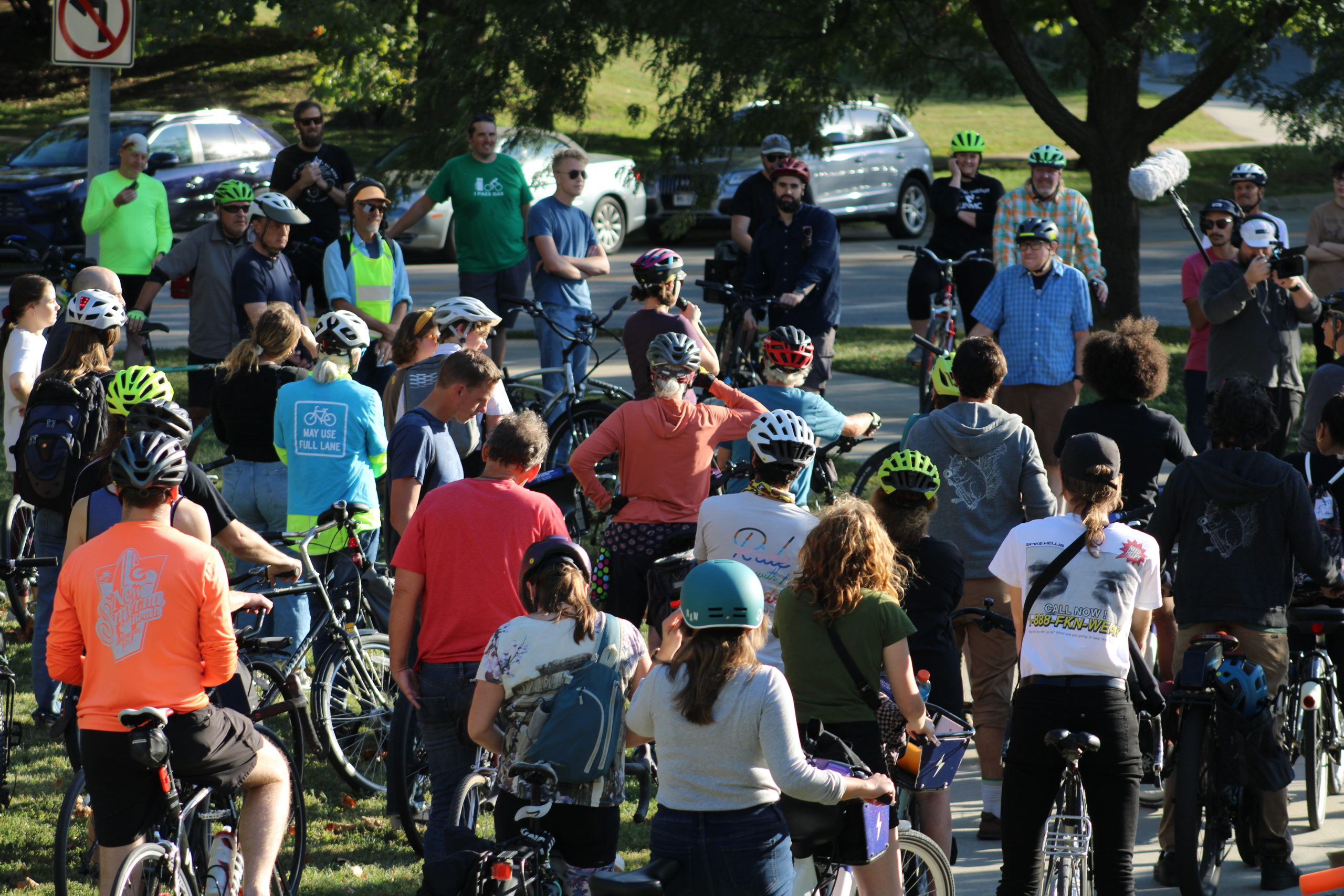At a recent mayor’s town hall regarding the city’s fiscally ambitious plan for improving city streets (not transportation, but streets) the Mayor indicated that the city will stop maintaining pedestrian crossings (1:35, hat tip to the great Clyde Anderson for asking the question), except near schools. The reasoning, backed up by the City Engineer, is that crosswalks give pedestrians a “false sense of safety.” (Let’s not spend too much time thinking about why they would want to maintain this false sense of safety for children walking to school, it may expose some logical inconsistencies.)
The orthodoxy of the “false sense of safety” was born of a 1972 study of pedestrian crossings in San Diego. There are some serious flaws with this study and how it is used today to justify paltry investments in pedestrian safety, in Omaha and other cities.
First: The 1972 study examined only unsignalized intersections, where there was neither a stop sign or traffic signal. To extend those conclusions to signalized intersections is not supported by the data.
Second: The researcher worked only with traffic statistics. The “false sense of safety” is speculation on the author’s part and not a scientific finding.
Third: The intersection with the crosswalk had much more traffic. In the San Diego study, the marked intersections accounted for 177 crashes and 18 fatalities, while the unmarked crossing had only 31 crashes and three fatalities. The fatality rates are about the same, and when the study controlled for the differences in volume, the marked crossing did have twice the risk, but with more than five times as many incidents. The correct conclusion isn’t that marked crossings provide a sense of safety, but that they encourage people to walk. The “false sense of safety” that accounts for the 2x increase in crashes could be that pesky “having the legal right of way” thing.
Fourth: The recommendation from the study is to limit the number of marked crossings and institute pedestrian education. The pedestrians were not crashing into cars and interrupting their right of way, but the other way around. Were there incidents of vehicles crashing into one another while one clearly had the right of way, we would not blame the driver of the vehicle who had the right of way.
Blaming the pedestrian and using that conclusion to limit pedestrian infrastructure can only have one outcome: fewer people will walk. Now, an engineer might see that as a positive (fewer people walking, fewer people who can be involved in a traffic crash), but a city trying to implement a Complete Streets ordinance and Vision Zero program has to make strides to ensure people’s safety regardless of their mode of transportation.
The fact is, with an aging population, the people most vulnerable will increasingly be the ones reliant on safe pedestrian infrastructure in order to live independent and fulfilling lives. The logical flip side to the “false sense of safety” is the assertion that “fear will keep you safe.” In Omaha, this logic is only applied to pedestrians, despite the evidence that risk perceptions calm vehicular traffic and make streets safer for everyone.
If we don’t address pedestrian safety from the perspective of keeping pedestrians safe, rather than discouraging people from walking, we will still have vulnerable populations that take great risks because they have no alternatives. The city has a Complete Streets ordinance and we should follow it. The ordinance directs the city to make streets safe for all users, not discourage the use by people walking so we can move distracted drivers more quickly through the city.
a special thanks to Clyde Anderson who did much of the initial research for this post and who asked the question at the town hall.


Thank you for keeping me informed on this issue. I will try to attend the next Walkability Team meeting at Weitz CEC.
That is seriously the stupidest concept I’ve ever heard. Truly, is Stothert so ignorant she doesn’t realize how that would leave the City open to horrendous lawsuits when (not if) people stumble, trip, and fall – perhaps even into traffic – due to deliberately non-maintained crosswalks? Where are the City attorneys? Surely *they* could anticipate this? And the logic that they *want* children to have that false sense of security, but not the general public? Are these people insane?